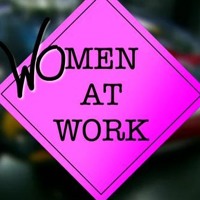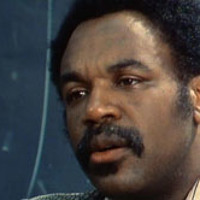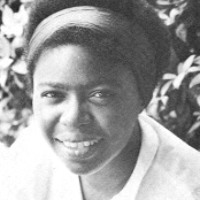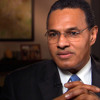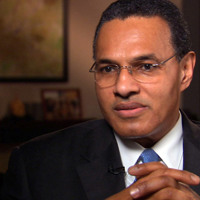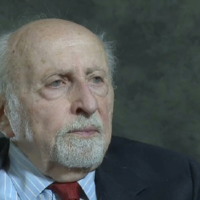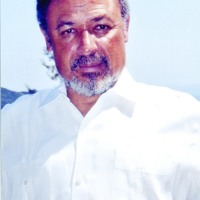As we pause to acknowledge and celebrate the contributions of workers on this national observance of Labor Day, it’s worth pondering: What would the American labor force look like if not for the contributions of women? The short answer: It would be a shell of itself, says Jones-DeWeever. She explains why, despite the progress women have made in the workplace, the American labor market in tailored to a “Leave it to Beaver” sense of family structure that, for the most part, no longer exists.
Friday, August 30, 2013
Courtland Cox - MOTM
The 1963 March on Washington for Jobs and Freedom remains the most significant mass gathering in the Civil Rights Movement, and its success was largely due to the efforts of the many committee members who planned the event. As a student at Howard University, Courtland Cox served on the steering committee as a representative for the Student Non-violent Coordinating Committee, which gave him a front-row seat to back-room conversations. Here, he recalls the controversy over the speech John Lewis planned to deliver, criticizing the Kennedy administration.
David and Toko Ackerman - MOTM
It seems almost natural that a movement with an aim of racial equity would include the young and the old, men and women, Northerners and Southerners, as well as various races. The husband and wife team of David and Toko Ackerman were true representations of this diversity. David, a self-proclaimed product of a lily-white community in Illinois, and his Japanese-born wife also reflect the various reasons that people were drawn to fight for change. The egregious racial violence in Selma, Ala., was Toko’s impetus to turn her attention toward race relations, while David’s involvement in the movement would occur almost by accident.
Esther Terry - MOTM
When the Civil Rights Movement began to gain traction throughout the south, much of the credit for its success rightly went to the college students from the nation’s Historically Black Colleges and Universities (HBCUs). Well-trained and educated, these young men and women were some of the first to take bold action in the fight for desegregation. Dr. Esther Terry, past provost of the all-girls Bennett College in Greensboro, N.C., was a young student at the school in 1960 when she participated in the sit-in at a Woolworth lunch counter. Here, she explains why “Bennett Ladies” were motivated to participate.
Gwendolyn Simmons - MOTM
Nearly 100 years after the Emancipation Proclamation, many of the Southern states in America were segregated and openly oppressive to African Americans. With themes of civil resistance, nonviolent protests, boycotts and voting rights at the heart of the Civil Rights Movement, there was another constant theme for Movement activists: danger. As a college student active with the Student Non-Violent Coordinating Committee (SNCC), Gwendolyn Simmons thought there was a surefire way to maximize her safety.
Dorie Ann Ladner and Dr. Joyce Ann Ladner - MOTM
The Civil Rights Movement is sometimes portrayed as the courageous efforts of individual men and women whose bigger-than-life heroism transformed American society. While working to prepare for the March on Washington in 1963, two sisters from Mississippi, Dorie Ann and Joyce Ann Ladner, realized there was a far reach of supporters for the Movement—from the unnamed every day person to internationally renowned entertainers. These 19- and 20-year-old sisters also realized that the constant emphasis on big-name civil rights icons was leading them to become ambivalent toward some leaders in the Movement—one in particular.
Thursday, August 29, 2013
Dorie Ann Ladner and Dr. Joyce Ann Ladner, March on Washington - MOTM
1963 was a momentous year for the Civil Rights Movement. Sit-ins, Freedom Rides, and voter-registration campaigns merged to galvanize people for the historic March in Washington on August 28. As two sisters from Mississippi— Dorie Ann and Joyce Ann Ladner—worked to prepare for the March, they realized there was a far reach of supporters for the Movement—from the unnamed every day person to internationally renowned entertainers. But before these 19 and 20-year-old sisters could immerse themselves fully in the Movement, they would have to overcome the emotion that accompanied the catastrophic news they received about a long time acquaintance.
Phil Hutchings, March on Washington - MOTM
The March on Washington was one of the largest organized efforts for human rights in United States history. With its focus on civil and economic rights for African Americans, the overarching theme of jobs and freedom permeated the nation’s capital for this August 28, 1963 event. As time leading to the March grew nearer, the primary organizer, Bayard Rustin, realized that despite garnering supporters from around the country, there was one critical place for which there had been no mobilization. Student Nonviolent Coordinating Committee member Phil Hutchings remembers receiving the call.
Robert Hayling - MOTM
Dentist Robert Hayling has been hailed as the "father" of the Saint Augustine, Fla., civil rights movement. The NAACP recruited Hayling in the early 1960s to organize demonstrations and coordinate visiting activists, including Martin Luther King Jr. in Saint Augustine. Using his dental office as a training ground for many of the motivated teens of the NAACP’s Youth Council, Hayling, through his organizing efforts, brought the city’s African-American population some rewards, but at a professional and personal cost.
William Anderson - MOTM
As much as the Civil Rights Movement was driven by the men and women who boldly took steps toward change, it was clear that not much could be done without well-run organizations taking the lead. Americus, Ga., native Dr. William Anderson founded the Albany Movement in Georgia in 1961 in an effort to forge a broad-based coalition for change. In the process, he not only brought together thousands of local citizens, but caught the attention of national leaders, including Ralph Abernathy and Martin Luther King Jr.
Friday, August 2, 2013
Freeman Hrabowski - Moments of the Movement
With so much on the line, one might think that everyone in the Black community would be on the same page when it came to fighting for civil rights. But Birmingham native Freeman Hrabowski explains that many middle-class African-Americans worried that there could be serious consequences for families of protesters. Now the president of the University of Maryland, Baltimore County, Hrabowski was one of the few middle-class children who not only joined the protests, but was trained to lead and protect the younger children who were often the catalyst for change in the movement.
Freeman Hrabowski 2 - Moments of the Movement
The bombing of the 16th Street Baptist Church in Birmingham was a turning point in the Civil Rights Movement. But for Freeman Hrabowski, now president of the University of Maryland, Baltimore County, it was personal. The Birmingham native was part of the movement as a child, and knew Cynthia Wesley, one of the four girls killed that morning. Here, he explains how the events of that day and the aftermath not only forever changed him, but Birmingham as well, and eventually, the country.
Alfred Moldovan - Moments of the Movement
With the physical safety of civil rights workers at stake, it was imperative that trained medical practitioners be on hand during protests. The Medical Committee for Human Rights served that purpose. Dr. Alfred Moldovan, a founding member of the group, was there to treat protesters at the scene of one of the most disturbing incidences of violence during the movement as SNCC workers crossed the Edmund Pettis Bridge. Here, he describes the scene and how he tried to prepare workers to protect themselves during future protests.
Carrie Young - Moments of the Movement
When a group of black college students refused to leave a segregated Woolworth's lunch counter in 1960 after being denied service, they ignited a groundswell of sit-ins across the South. These collective sit-ins led to the creation of the Student Nonviolent Coordinating Committee, or SNCC ("snick"). Making its way to Arkansas in the 1960s, SNCC (snick) found a committed worker in teenaged Carrie Young. But even Young’s devotion had not prepared her for the illiteracy she would find among the residents as she worked to organize them to vote. Neither was Young expecting that SNCC would lead her to a forbidden love.
Purcell Conway - Moments of the Movement
Young people played a key role in the civil rights movement. For some, their involvement came as an objection to their parents’ various fears. For a young Purcell Conway, his involvement was a family affair. In the Conway household, an arrest in pursuit of civil rights was an investment for the future and a badge of honor. As Conway would discover, the fight for racial justice would lead to some unexpected findings and to equally unanticipated allies.
Phil Hutchings - Moments of the Movement
While working toward similar goals of racial respect and human dignity, the paths various civil rights organizations took to achieve these goals sometimes varied—occasionally within the same organization as leadership and philosophies evolved. The Student Nonviolent Coordinating Committee or SNCC (pronounced SNICK) epitomized this evolution. Beginning in the 1960s as an interracial group advocating nonviolence, SNCC shifted its focus to political activism and later in the decade to black militancy. SNCC member Phil Hutchings recalls how his civil rights training helped saved his life years after he had adopted SNCC’s militant position.
Subscribe to:
Comments (Atom)
